Abstract
A total of 113 cases of open myelomeningocele operated on shortly after birth were followed up and the 80 survivors (71%) were assessed one and a quarter to seven and a half years later. Their disability was classified in terms of mobility, intelligence, continence, and major complications; these when combined provided an assessment of overall disability. The overall disability of the survivors was minimal in 6%, moderate in 40%, severe in 39%, and very severe in 15%.
A number of clinical features present at birth were analysed for their predictive value. Of these the sensory level, which frequently differed from both external and radiological levels of the lesion, correlated with the outcome in terms of mobility, intelligence, continence, major complications, and overall disability; and also with deaths caused by renal failure.
A policy of confining operation to those patients with a reasonable chance of achieving independence would involve selecting for treatment a minority of all infants born with open myelomeningocele.
Full text
PDF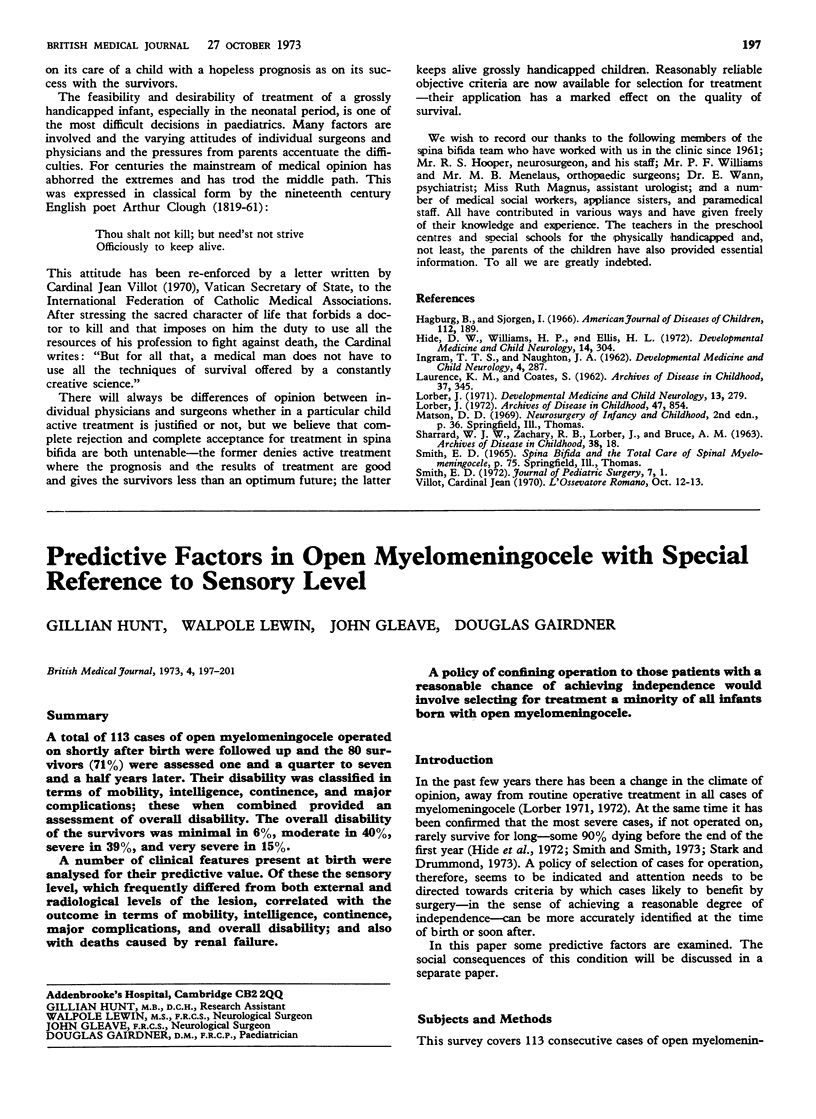
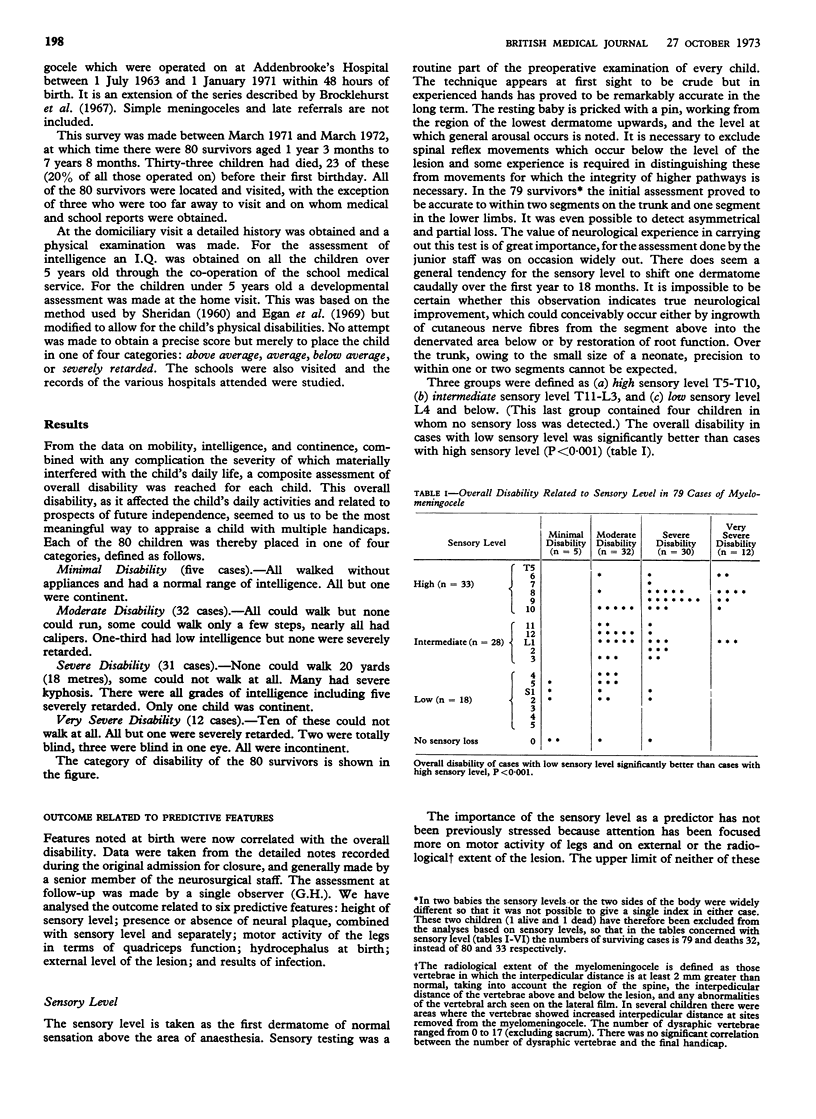
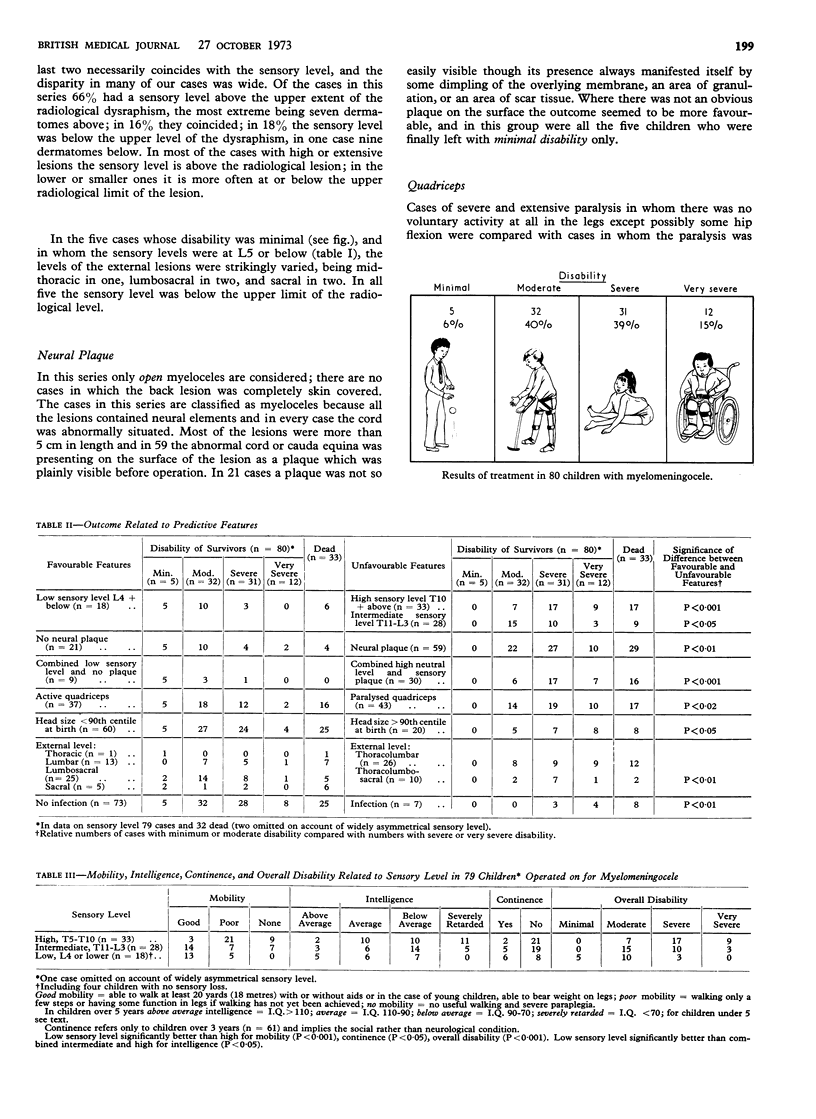
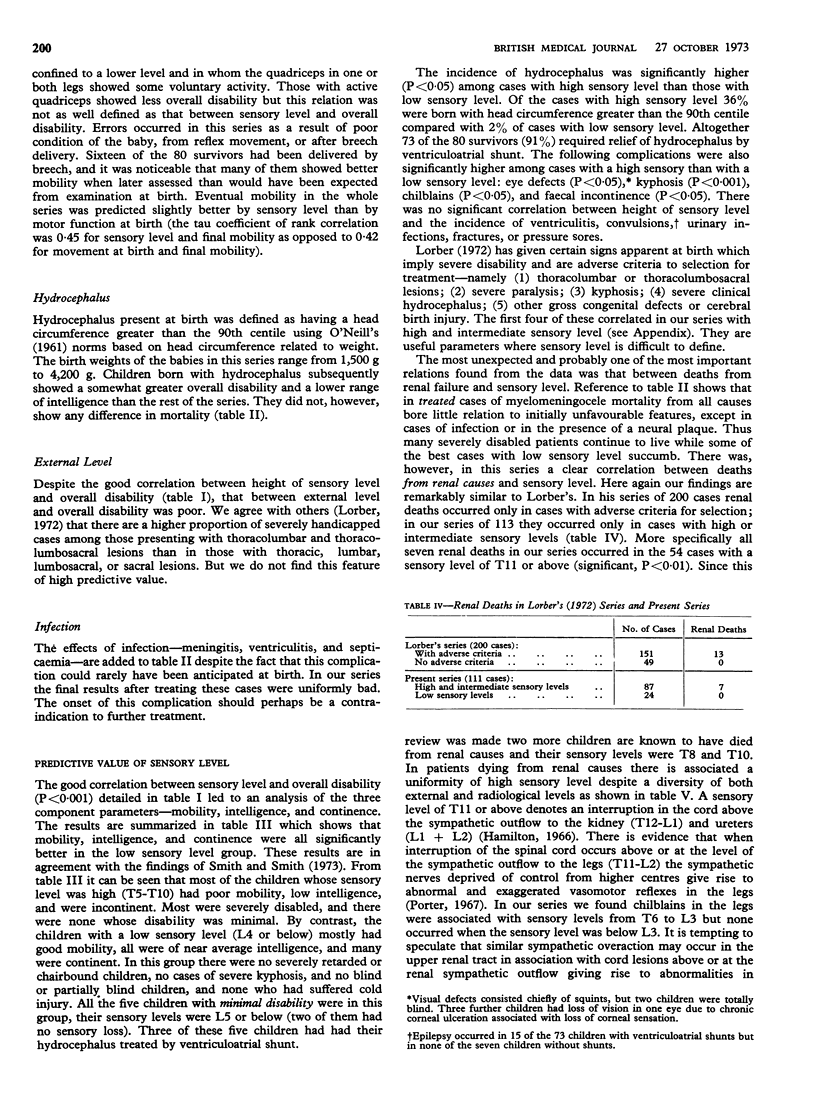
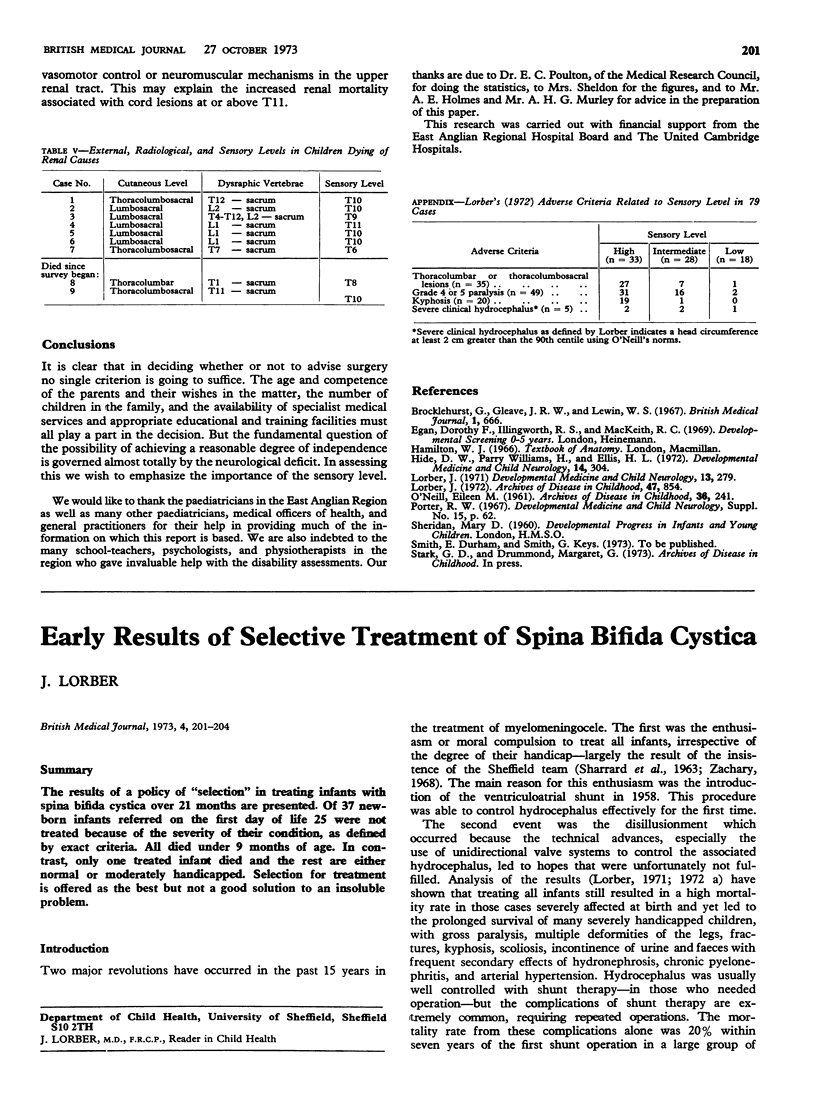
Selected References
These references are in PubMed. This may not be the complete list of references from this article.
- Brocklehurst G., Gleave J. R., Lewin W. Early closure of myelomeningocele, with special reference to leg movement. Br Med J. 1967 Mar 18;1(5541):666–669. doi: 10.1136/bmj.1.5541.666. [DOI] [PMC free article] [PubMed] [Google Scholar]
- Hide D. W., Williams H. P., Ellis H. L. The outlook for the child with a myelomeningocele for whom early surgery was considered inadvisable. Dev Med Child Neurol. 1972 Jun;14(3):304–307. doi: 10.1111/j.1469-8749.1972.tb02594.x. [DOI] [PubMed] [Google Scholar]
- Lorber J. Spina bifida cystica. Results of treatment of 270 consecutive cases with criteria for selection for the future. Arch Dis Child. 1972 Dec;47(256):854–873. doi: 10.1136/adc.47.256.854. [DOI] [PMC free article] [PubMed] [Google Scholar]


